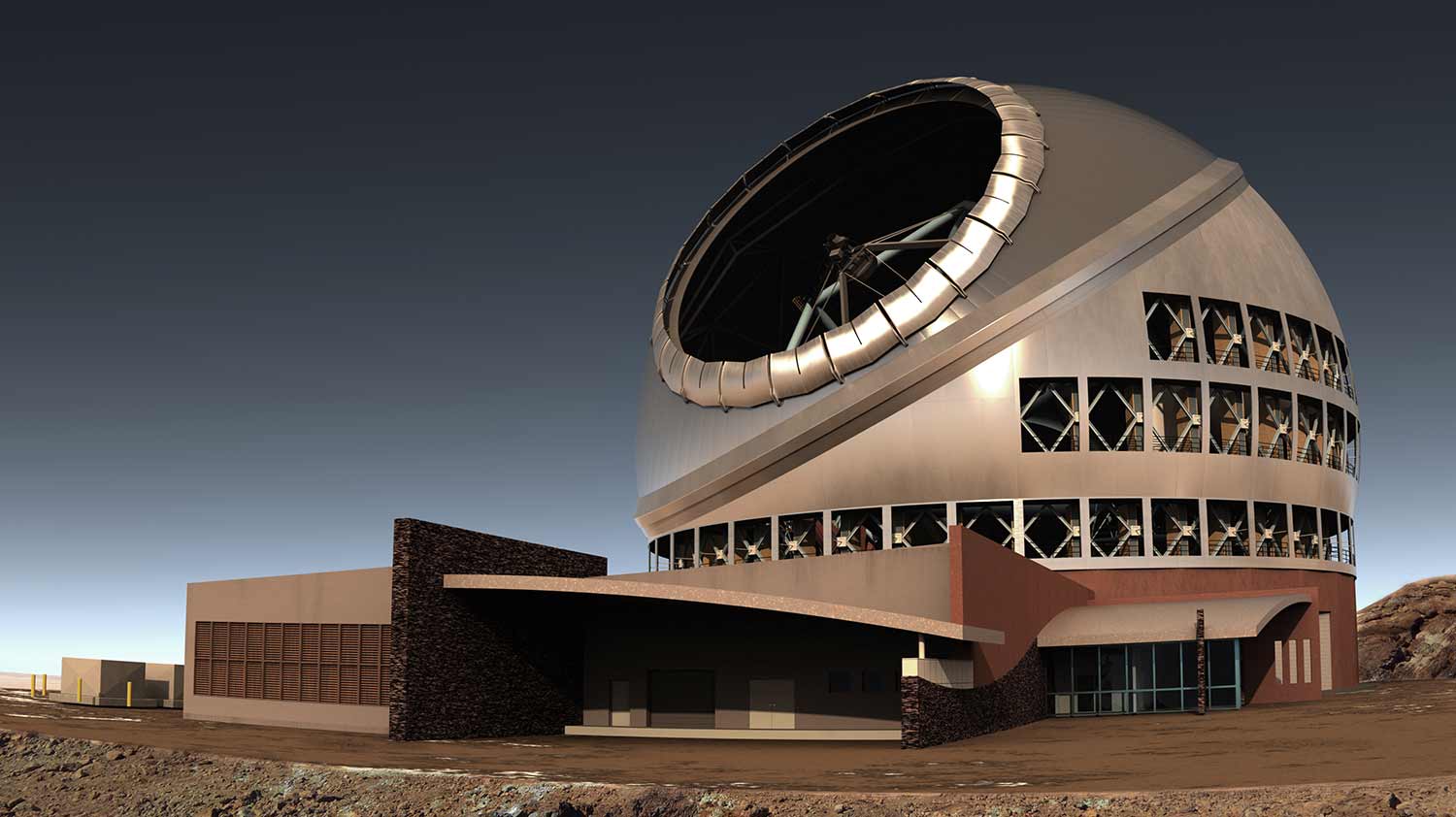By:
- Cynthia Dillon
Published Date
By:
- Cynthia Dillon
Share This:

Side view of the TMT. Photo courtesy of TMT International Observatory
Forget about ‘TMZ’ News, ‘TMT’ is Looking at Big Stardom
Hawaiian court clears the way for construction of one of the world’s most massive telescopes
The Hawaiian Supreme Court ruled Oct. 30 to support the construction permit of the Thirty Meter Telescope (TMT) atop Mauna Kea. According to the Honolulu Star-Advertiser, the telescope would be the biggest and most expensive in the Northern Hemisphere. It would also be one of three huge prospective telescopes that could transform astronomy in the 21st century. UC San Diego astrophysicist Shelley Wright is the Project Scientist for TMT’s first light instrument, IRIS.
“Resolution for TMT’s future is a big deal for astronomy at the University of California,” said Wright, a professor of physics. “UC is a major partner in TMT, and the telescope promises exciting new discoveries about the universe, ranging from studying astrobiology questions in our solar system to detecting the first stars forming after the Big Bang.”
TMT has been controversial because Mauna Kea is part of the “ceded lands” originally belonging to the Hawaiian kingdom and now administered by the state of Hawaii for the benefit of its citizens. Fifty years ago, the University of Hawaii began leasing and subleasing 11,000 acres on the mountain top to various observatories for telescopes. Protestors blocked progress toward TMT construction in 2014, claiming the observatories are culturally and environmentally invasive.
Yet, a recent poll showed that most Hawaiians favored building TMT on Mauna Kea. The telescope, named for the diameter of its main light-collecting mirror (30 meters), has been in the planning stages for 15 years. With an estimated cost of $1.4 billion, TMT is expected to be completed in 2029, if construction begins next year.
Share This:
You May Also Like
Stay in the Know
Keep up with all the latest from UC San Diego. Subscribe to the newsletter today.



